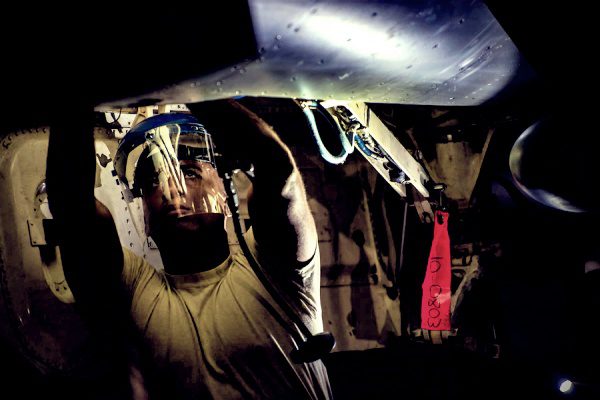Overview of stop and frisk:
General rule. Fourth Amendment allows a limited government intrusion (“stop and frisk”) based on less than probable cause (“reasonable suspicion”) where important government interests outweigh the limited invasion of a suspect’s privacy. Terry v. Ohio , 392 U.S. 1 (1968); Mil. R. Evid. 314(f).
Reasonable suspicion.
Reasonable suspicion is specific and articulable facts, together with rational inferences drawn from those facts, which reasonably suggest criminal activity. Terry v. Ohio , 392 U.S. 1, 21 (1968); United States v. Bair, 32 M.J. 404 (C.M.A. 1991). See United States v. Robinson, 58 M.J. 429 (C.A.A.F. 2003), for an excellent framework for a reasonable suspicion analysis.
(1) Reasonable suspicion is measured under the totality of the circumstances; and, (2) Reasonable suspicion is less than probable cause.
Reasonable suspicion may be based on police officer’s own observations. United States v. Peterson , 30 M.J. 946 (A.C.M.R. 1990). Reasonable suspicion existed to stop soldier seated with companion in car parked in dead end alley in area known for drug activity at night; car license plate was from out-of-state.
Reasonable suspicion may be based on collective knowledge of all police involved in investigation.
United States v. Hensley , 469 U.S. 221, 229 (1985). Information in police department bulletin was sufficient reasonable suspicion to stop car driven by robbery suspect. Reasonable suspicion may be based on an anonymous tip. Alabama v. White , 496 U.S. 325 (1990). Detailed anonymous tip was sufficient reasonable suspicion to stop automobile for investigative purposes. But see Florida v. J.L ., 529 U.S. 266 (2000) (stating that anonymous tip needs to be reliable in “its assertion of illegality”).
Reasonable suspicion may be based on drug courier “profile.”
United States v. Sokolow , 490 U.S. 1 (1988). “Innocent” non-criminal conduct amounted to reasonable suspicion to stop air traveler who paid $2,100.00 cash for two tickets, had about $4,000.00 in cash; was traveling to a source city (Miami); was taking 20 hour flight to stay only 2 days; was checking no luggage (only carry-on luggage); was wearing same black jumpsuit and gold jewelry on both flights; appeared nervous; and, was traveling under alias. Cocaine found in carry-on bag after dog alerted was admissible.
Reasonable suspicion may be based on “headlong flight” coupled with other circumstances (like nervous and evasive behavior and high-crime area). Illinois v. Wardlow , 528 U.S. 119 (2000).
- Search & Seizure
- Authorization and probable cause
- Probable Cause
- Seizure (Apprehension) of Persons
- Seizure of Property
- Automobile Exception
- Consent Searches
- Administrative Inspections
- Emergency & Inventory Searches
- Searches for Medical Purposes and School Searches
Nature of detention. A stop is a brief, warrantless investigatory detention based on reasonable suspicion accompanied by a limited search.
Frisk for weapons.
The police may frisk the suspect for weapons when he or she is reasonably believed to be armed and dangerous. Mil. R. Evid. 314(f)(2).
Plain feel.
Police may seize contraband items felt during frisk if its contraband nature of items is readily apparent. Minnesota v. Dickerson , 508 U.S. 366 (1993) (seizure of cocaine during frisk held unconstitutional because the contraband nature of cocaine was not readily apparent). But looking down the front of a suspect’s pants to determine if “bulges” were weapons was reasonable. United States v. Jackson , No. ACM 33178, 2000 CCA LEXIS 57 (A.F. Ct. Crim. App. Feb. 28, 2000) (unpublished opinion).
Length of the detention.
15 minutes in small room is too long. Florida v. Royer , 460 U.S. 491 (1983). Suspect was questioned in a large storage closet by two DEA agents was unreasonable: “investigative detention must be temporary and last no longer than is necessary to effectuate the purpose of the stop.”
20 minutes may be sufficiently brief if police are hustling. United States v. Sharpe , 470 U.S. 675 (1985). 20-minute detention by highway patrolman waiting for DEA agent to arrive was not unreasonable.
Use of firearms.
United States v. Merritt , 695 F.2d 1263 (10th Cir. 1982). Pointing shotgun at murder suspect did not turn legitimate investigative stop into arrest requiring probable cause. United States v. Sharpe , 470 U.S. 695 (1985); United States v.Hensley , 469 U.S. 221 (1985). Merely displaying handgun did not turn an investigative detention into a seizure requiring probable cause.
Use of dogs.
Illinois v. Caballes , 543 U.S. 405 (2005) (holding that otherwise lawful traffic stop was not expanded into an illegal search or seizure for contraband when officer walked a drug detection dog around vehicle during a routine traffic stop).
United States v. Alexander , 901 F.2d 272 (2d Cir. 1990). Approaching car with drawn guns and ordering driver out of car to frisk for possible weapons did not convert Terry stop into full-blown arrest requiring probable cause.
Important government interests.
Police officer safety. Terry v. Ohio , 392 U.S. 1 (1968). Frisk was justified when officer reasonably believed suspect was about to commit robbery and likely to have weapon.
Illegal immigrants.
I.N.S. v. Delgado , 466 U.S. 210 (1984); United States v. Brignoni-Ponce , 422 U.S. 873 (1975). But Border Patrol Agent’s squeezing of a canvas bag during a routine stop of bus at checkpoint violated Fourth Amendment. Bond v. United States , 529 U.S. 334 (2000).
Illegal drugs.
United States v. De Hernandez , 473 U.S. 531 (1985). “[T]he veritable national crisis in law enforcement caused by smuggling of illicit narcotics . . . represents an important government interest.”
United States v. Sharpe , 470 U.S. 675 (1985); United States v. Place , 462 U.S. 696 (1983); United States v. Mendenhall , 446 U.S. 544 (1980). But see Indianapolis v. Edmond , 531 U.S. 32 (2000) (finding that use of roadblock for general search of drugs violated the Fourth Amendment).
Solving crimes and seeking justice.
United States v. Hensley , 469 U.S. 221 (1985). There is an important government interest “in solving crime and bringing offenders to justice.”
House frisk (“Protective Sweep”).
Maryland v. Buie , 494 U.S. 325 (1990). Police may make protective sweep of home during lawful arrest if they have “reasonable belief based on specific and articulable facts” that a dangerous person may be hiding in area to be swept; evidence discovered during protective sweep is admissible. United States v. Billings , 58 M.J. 861 (A. Ct. Crim. App. 2003). Police may conduct a protective sweep of a house, even though the arrest takes place outside the house.


